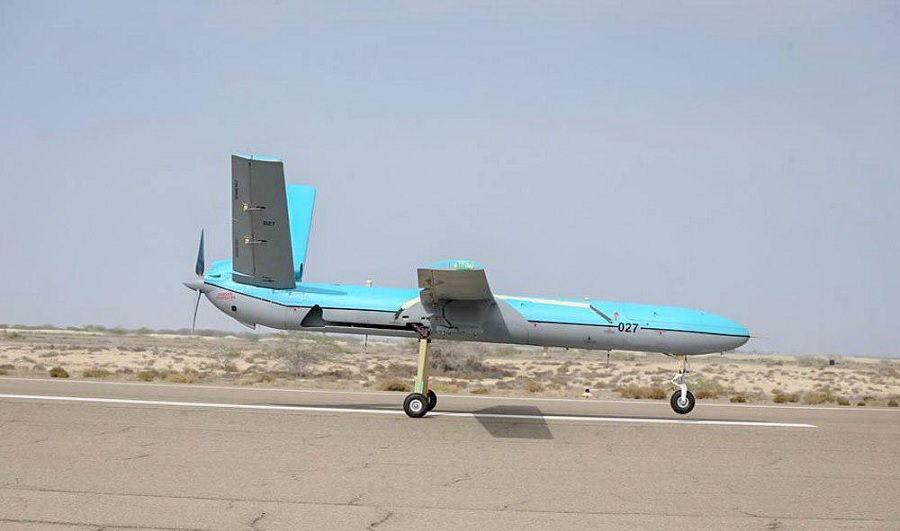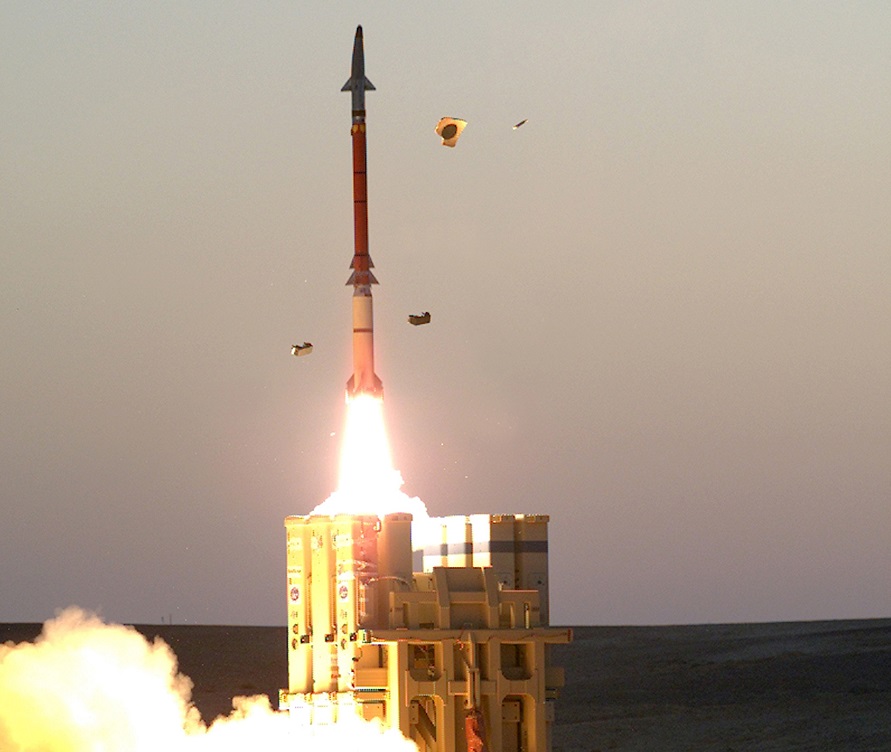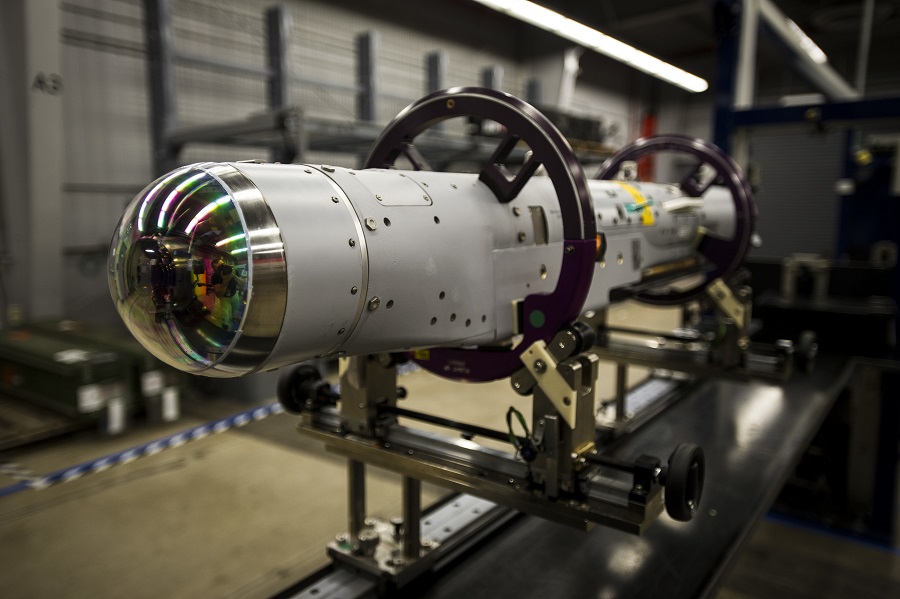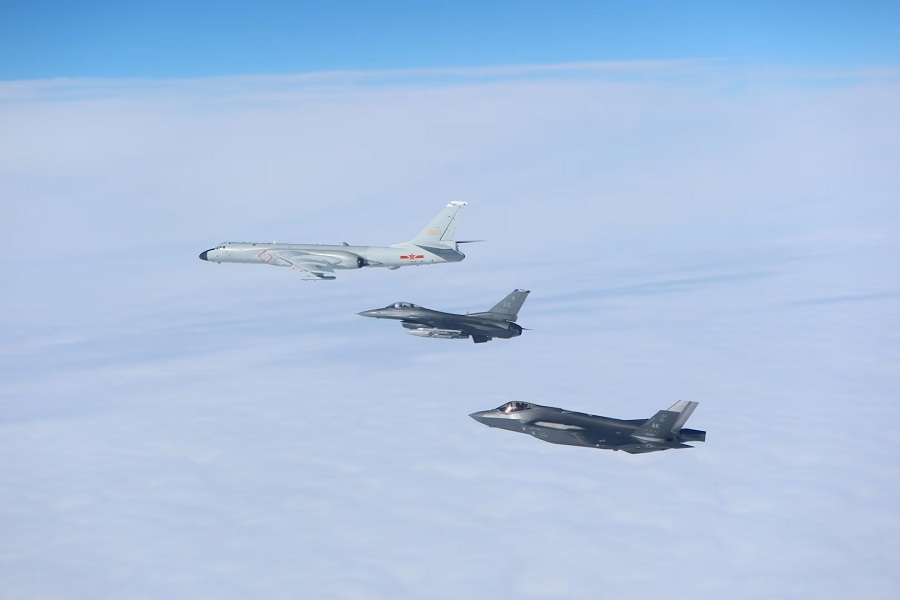“The war in Gaza is characterized by the high maneuverability of ground forces and the need to achieve the shortest sensor-to-shooter time,” a senior defence source said.
The source added that fighting in a very dense urban area also requires very precise guided weapon systems to avoid hitting uninvolved populations.
“The use of armed UAVs in this war reaches records almost every day. They locate targets and destroy them in seconds.”
Videos released by the IDF show Hamas fighters emerging from a building carrying anti-tank rockets, looking for a good launching point, and being hit in seconds by one of the weapon systems carried by the armed UAV.
These weapon systems are highly classified, but experts who viewed the videos said that they are very effective.
The extensive use of Iranian-made armed drones by Hamas and Hezbollah forced the IDF to come up with an immediate solution for the great number of attacks performed by armed drones on the Israeli Merkava 4 tanks participating in the fighting in Gaza. While these tanks are protected from anti-tank rockets by the Rafael Trophy Active Protection Systems (APS), the upper part of the tank has no protection against drones dropping anti-tank rocket warheads from above.
The solution—an emergency installment of protective metal nets placed above the tank’s turret. These “Cope Cages” have proven their efficiency, but that is a makeshift solution.
The Israeli Ministry of Defence, along with some Israeli defence companies, is now working on a version of the two existing Israeli APS that will address the new threat not covered by the existing ones.
In recent years, the Israeli Air Force (IAF) requested more advanced fighter aircraft. In recent days, a special request was made to the U.S. administration to expedite the supply of another squadron of 25 Lockheed Martin F-35s, one squadron of Boeing’s F-15 EX, and a squadron of the Apache AH-64E attack helicopter. These aircraft were on the shopping list.
The decision to purchase the new version of the attack helicopter is a direct outcome of the ongoing war. The IAF learned that a combat helicopter is an essential tool in urban fighting where you have to hunt teams of rocket launchers while closing the sensor-to-shooter loop in seconds.
The majority of the Israeli-made Merkava tanks in Gaza will translate to another idea that has been in the air for some time but now has been prioritized on the IDF’s “to-do” list—equipping the tanks with advanced loitering weapon systems. The idea is to ask Israeli defence companies that make this type of weapon to develop systems that can be carried by the Merkava and will allow the tank commander to dramatically increase the platform’s footprint by launching a loitering weapon system that will look for targets not in the commander’s line of sight and destroy them.
“This will be a major improvement of the tanks’ capabilities, mainly in very dense urban areas like Gaza,” a senior defence source said.
The huge number of rockets launched by Hamas and Hezbollah created a “saturation” situation that forced Israel to act to get additional interceptors for the Iron Dome air defence systems, which again achieved an amazing over 90% kill rate.
As this saturation is expected in future wars, Israel is accelerating the development of the “Iron Beam” laser system developed by Rafael and designed to intercept aerial threats like rockets, armed UAVs, and drones.
As part of that increased effort, the prototype of the Iron Beam has been deployed for advanced testing near the Gaza Strip during the ongoing war.
Sources say that the initial effort is to develop an electric 100-150 kW solid-state laser capable of intercepting rockets and missiles. The idea is to use two laser guns to create the needed power.
A source in the defence industry said that in order to have a system capable of intercepting more than short-range rockets and missiles, Israel will need a laser generator capable of producing a 1 MegaW beam.
And there are lessons that will increase the use of operational systems used by infantry soldiers. In recent fighting, some of the special commando units used the Rafael FireFly personal loitering weapon system.
FireFly (Maoz) was designed for fighting within the urban arena where situational awareness is limited, the enemy is behind cover, and precision is critical.
FireFly is rapidly deployed within seconds. It is portable, durable, and includes a rugged airframe to withstand the harsh environment of urban combat. Its single-user operation is designed for the dismounted soldier—light, small, and agile.
Firefly features a dual seeker, target tracker, homing algorithms, computer vision, Safe & Arm fusing mechanisms, and a rugged tablet-based HMI (Human Machine Interface).



























